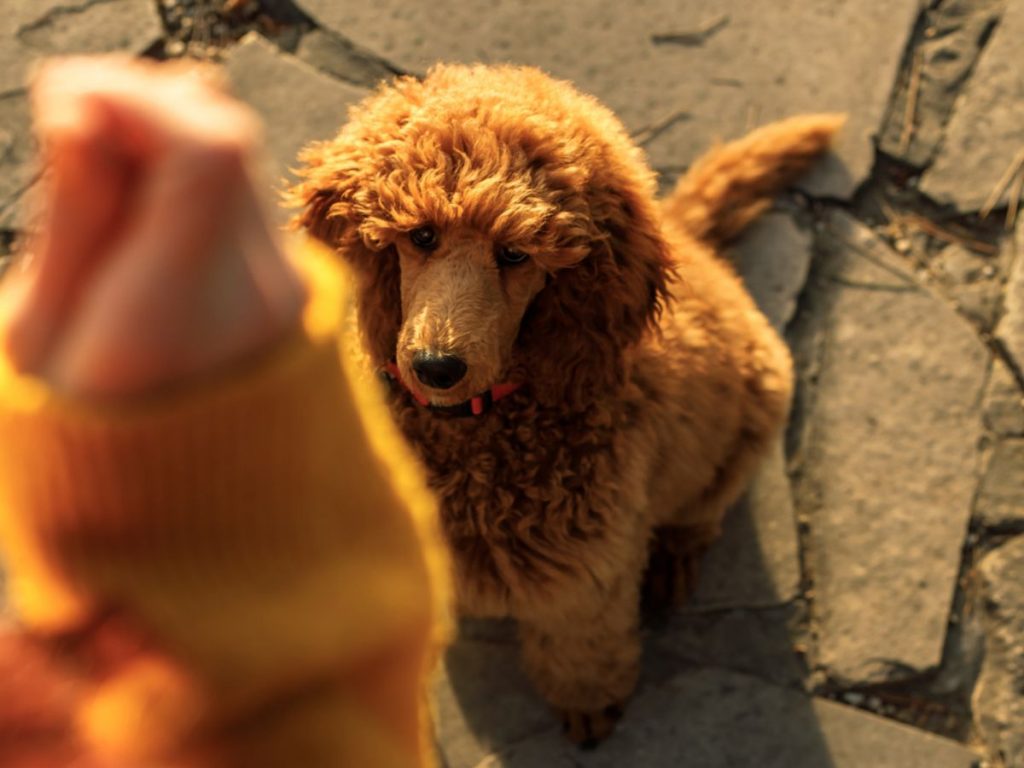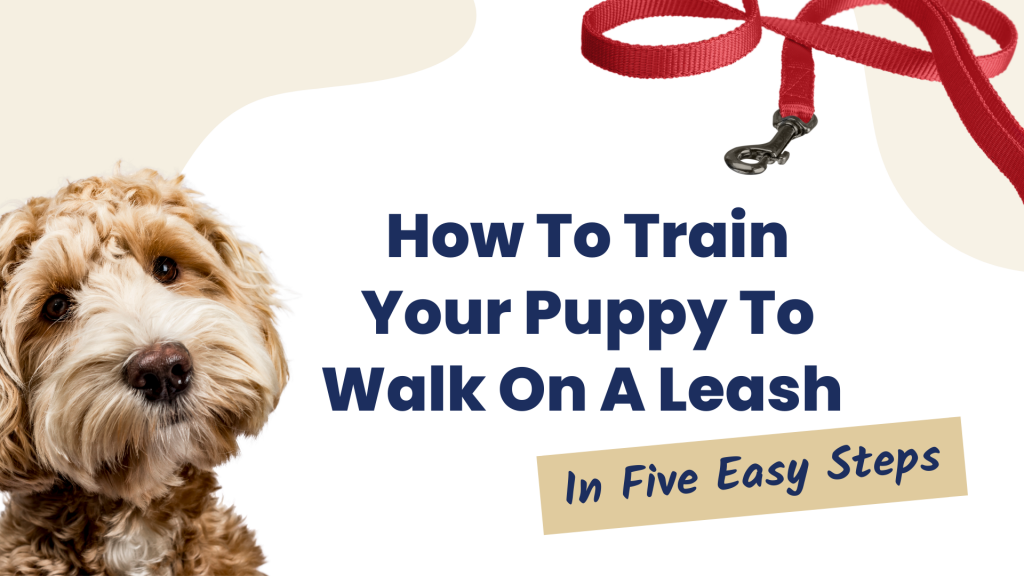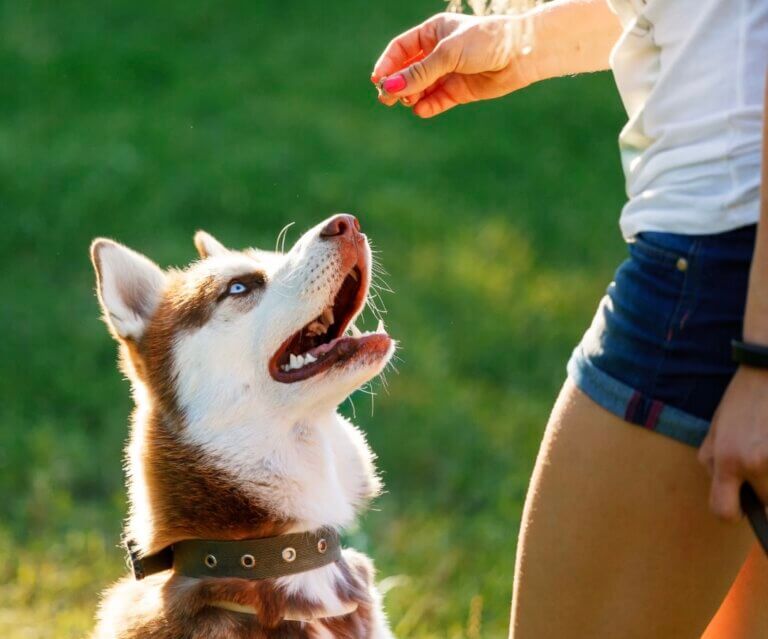Don’t you just love the feel of taking your pup out for a walk on a warm sunny day?
Look, before you can enjoy that, there’s the small matter of training your puppy to walk nicely on a leash.
You see, if your puppy doesn’t walk on a leash, teaching him can be a simple process if (and only if) you know the proper steps to take.
It’s actually not as difficult as it sounds…
Which is why in this blog post, we’ll share with you our favourite tips you can effortlessly apply with your dog.
If this sounds good to you, then keep reading!
We will cover how to train a puppy to walk on a leash in 5 easy steps.
But first, you have to start with ensuring that you have the proper equipment.
When it comes to leash training dogs, you’ll need a collar or harness that fits your puppy snugly but isn’t too tight.
Once you have the right supplies, you’re ready to start!
The first step on How To Lose Leash Walk With Your Puppy is to…
Get your puppy used to the leash
As simple as it may sound but this is the most important one.
One practical way of doing so is to simply attach the leash to his collar and let him drag it around the house for short periods.
It will help your puppy understand that the leash is not a toy and get him used to its feel.
You can introduce the leash gradually, starting with just a few feet and progressively lengthening the distance.
Now listen…
Training your puppy to walk on a leash is never done by dragging or forcing them, so they walk beside you or wherever you want to go…
But instead, you simply let them get used to the feeling of the leash.
As your puppy gets more comfortable with the leash, you can start attaching it before meals or during playtime.
And just in case you’re wondering how to train a puppy to walk on a leash without pulling, the secret is to be patient and consistent.
Yes, because there’s a very good chance for your puppy to be overly excited at first.
If, in any chance, your puppy starts to pull on the leash, stop walking and wait for them to calm down before continuing.
Remember, the goal is to make walking with a leash a positive experience for your puppy.
All you need is to wait patiently until they behave better when that happens.
Start by having a clear command that lets your puppy know where he should be
This command can be something like, “heel…”, “with me…”, or “let’s go!”
Remember to be consistent with the command you use.
Using the same commands frequently and consistently during training will let him know what you expect.
Next up…
Increase the distance of your walk gradually over time
You can begin by walking around your house or backyard.
And as your puppy gets more comfortable walking with you, you can venture out into the neighbourhood.
Just make sure to keep the walks short at first and then increase the distance little by little.
Plus, it’s always good to keep the walks interesting for your puppy by varying the route.
You can also try adding some new elements like walking in different types of weather, on other surfaces, and at different times of the day.
Give lots of rewards and praise for making good choices

Whenever your puppy makes progress or follows your commands, give him lots of treats and verbal praise.
Give lots of positive reinforcement when he’s doing a fantastic job!
For example, you can reward your puppy for walking calmly on the leash and ignoring distractions.
Eventually, you’ll be able to phase out the treats and replace them with verbal praise alone.
You can also use a clicker to help your puppy understand when he’s doing something right.
There’s a separate article about that, which you can find here.
Work under low distraction (and slowly build it up)
When you’re first starting out, try to find a quiet place with few distractions so your puppy can focus on you.
Once he’s mastered this, you can begin working in more distracting environments and situations.
But always remember to take things slow and give your puppy lots of breaks.
If he’s getting overwhelmed, it’s perfectly fine to end the training session for that day.
The bottom line is…
Training your puppy to walk on a leash takes patience and consistency.
Now, before we wrap up…
Let us first answer two of the most common questions we get regarding this subject.
Question #1: What age to start leash training a puppy?
Ideally, you can already start leash training your puppy as young as eight weeks old.
But be extra careful not to overwhelm them.
In no time, they will learn to walk on a leash with the right amount of incentives and encouragement.
However, keep in mind that puppies generally have a limited attention span.
So, it’s best to keep the training sessions short and sweet at first.
As discussed, you can always increase the duration of the sessions as they get more comfortable with the leash.
Question #2 How long does it take to leash train a puppy?
The answer is it varies depending on the puppy, PLUS…
With the quality of training provided.
If you’re doing it right and willing to put in the work, you can expedite the process.
Frankly, when it comes to puppy lead training, some learn within hours while others need more time.
But you see, the usual leash training dog can take up to several weeks.
So be patient and always remember to have fun with them during the process!
If you want to have a furry friend who can enjoy walks by your side in no time, we can help you cut the time it usually takes a loose leash walk with your puppy.
Check our 5 Star Puppy Package, designed to build solid foundations for long term success with your pup.
Well, that’s basically it!
We hope this article helped teach you how to train your puppy to walk on a leash.
If you have any questions or comments, please feel free to leave them below!
And be sure to check out our other articles or follow us on social media to get more tips and tricks for different dog pieces of training.

